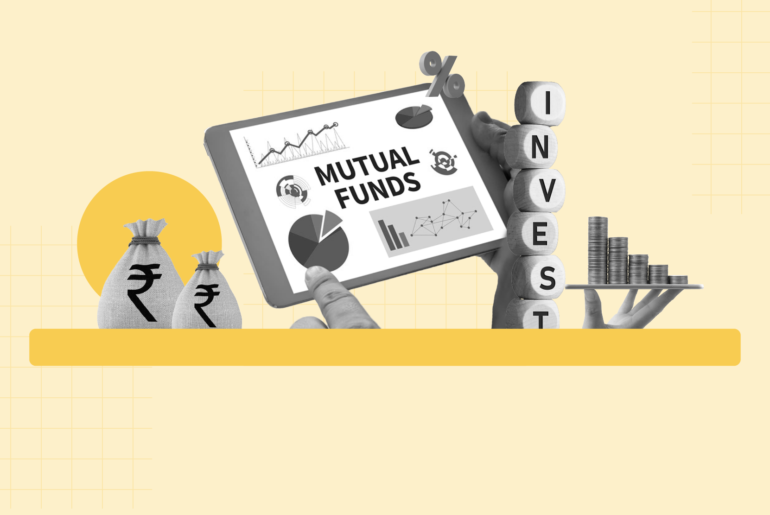Last Updated on Sep 12, 2022 by
Mutual fund portfolios consist of investments across asset classes and securities such as equity, fixed income, and other avenues, carefully structured and maintained by fund managers, in line with the objectives of the fund. Investment in such portfolios gives retail investors access to quality investments that are professionally managed. Let’s deep dive into mutual fund portfolios and figure out what they are and how to pick a fund that suits your requirements.
Table of Contents
What is a mutual fund portfolio?
A mutual fund is an investment in financial securities like stocks, bonds, debentures, money market securities, government securities, and other assets to meet the common financial goals of participants. A mutual fund portfolio is a combination of such investments made in different assets with the pool collected from various investors. The objective of the fund is defined and stated upfront and an expert mutual fund portfolio manager is tasked with ensuring that the fund stays true to the objective.
Retail investors may be able to build wealth over time by investing in mutual fund portfolios that suit their risk profile and are in sync with their financial goals.
Features of mutual fund portfolio
Managed by qualified experts
Mutual fund portfolios are managed by professional fund managers with a team of analysts who have access to top-notch research tools and databases. This helps them devise strategies through well-researched and documented methods that have a higher potential to yield results. The team is constantly monitoring the market and will affect any necessary changes to the portfolio so that the mutual fund portfolio is poised to capture the opportunities from the market while minimizing risk.
Diversification of investments
Mutual fund portfolios are designed to diversify investments across stocks or market segments based on market capitalization or industry or even asset classes. This helps investors spread their risk and get risk-adjusted rewards from their investments.
Affordability
Investing in mutual fund portfolios enables investors to capture growth from entire markets or market segments at a fraction of the cost. Most mutual fund portfolios have pocket-friendly minimum investment amounts of Rs 500-1,000.
Flexibility of investment
In mutual fund portfolios, you can invest your money at once or choose to invest in multiple installments. Using the SIP system, you can schedule your investment.
Why invest in a mutual fund portfolio?
Creating an investment portfolio can be done by selecting different combinations of equities, bonds, and other debt securities. However, if you do not have the time to research the markets or an understanding of how investments function, things could get sour. Here is where mutual fund portfolios come with a beacon of hope.
If you choose an actively managed fund, a fund manager brainstorms and picks profitable investments on your behalf. You only need to buy units of the mutual fund and your money will be invested across the mutual fund’s portfolio. The fund manager will also undertake rebalancing measures and risk management to ensure the fund value is not severely hampered in case of a market downturn. On the other hand, if you choose passively managed funds, the fund managers mirror a benchmark index to create the mutual fund portfolio, and your investment will be spread among the components of the underlying index.
How to create a mutual fund portfolio?
To create a portfolio with mutual fund schemes, you would require to follow the below steps:
- Understand your risk profile – the purpose of investing, risk tolerance, and investment horizon.
- Go through the market trend and analyze the risk and return ratio
- Decide how many schemes you want to add to your investment portfolio.
- Select the schemes after comparing the returns, cost, minimum investment, and risk involvement in the schemes. You can select schemes from different categories like equity, debt, and hybrid funds.
- Decide the weightage for each mutual fund as per the risk and return ratio. More money could be assigned to more profitable assets as per your risk profile.
This way, you can create a Mutual portfolio that can fulfill your financial objective within the prescribed time frame. ELSS funds may also serve towards your tax-saving requirements.
Things to consider as an investor
Mutual fund portfolios could be a good proxy to directly investing in the highly risky stock market. Even though mutual funds too have exposure to equity, the presence of a professional portfolio manager goes a long way in risk management.
Below are a few things to consider before investing in mutual fund portfolios:
- Select the type of fund suitable to your risk profile.
- Compare the past performance of each fund scheme and pick ones that display consistency in returns.
- Select mutual fund schemes that have low expenses ratios.
- Keep in mind the taxation of different kinds of funds. Generally, debt funds are more tax efficient.
Taxability on mutual fund portfolios
Short-term capital gains tax and long-term capital gains tax apply on returns earned from mutual fund portfolios. Depending on whether the portfolio has more exposure to equity or debt, the percentage of tax varies.
In general, long-term capital gains tax is less than short-term capital gains tax, which feeds the theory that investments must be held for longer durations for good returns.
Equity Linked Saving Scheme (ELSS) is a type of mutual fund that gives the benefit of tax saving under Section 80C up to Rs 1.5 lakh.
Bottom line
If you are an investor who wants to invest in the market but does not have the knowledge or the time to research and monitor the markets, mutual fund portfolios could be a great option you can explore. Understand your financial and long-term goals, risk, and tax liabilities.
It is always recommended to consult a Certified Planner for the same.
- SBI Equity Mutual Funds – List of Top Performing Schemes for 2025 - Mar 27, 2025
- Hedge Funds in India: Definition, Types, & Benefits - Mar 27, 2025
- List of Overnight Mutual Funds in India (2025) - Mar 17, 2025




